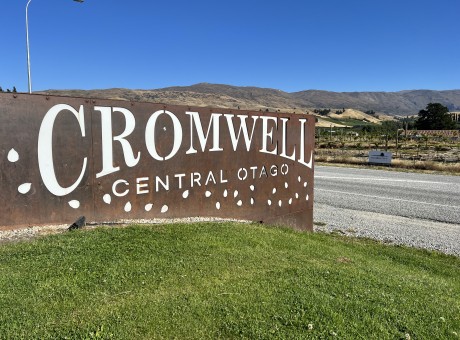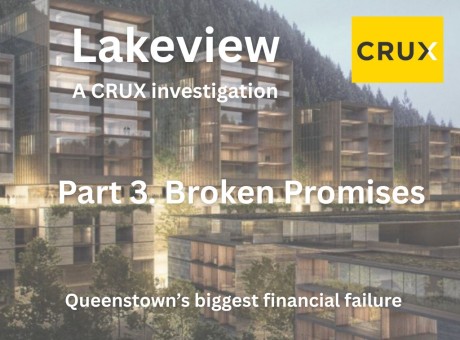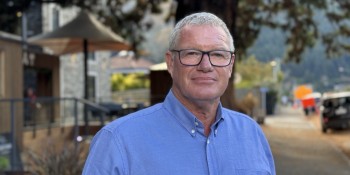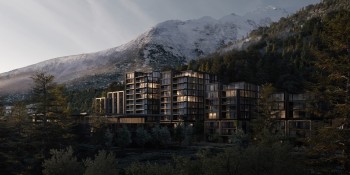Wānaka sports clubs 'busting at the seams' but five years from help

Wānaka's sports clubs have been crying out for more facilities as their numbers grow, yet for years, they claim council funding has been focused elsewhere.
A few weeks ago, they were told by Queenstown Lakes District Council sport and recreation manager a multi-sports facility project was most likely more than five years away in the draft Long Term Plan.
Meanwhile, the draft Long Term Plan allocates $42 million towards sports fields, courts and car parks beside the Queenstown Event Centre in the next six years, with $250,000 allocated straight away.
The Wānaka project has been in discussion for a decade, and would involve re-purposing a 20-hectare site where the old oxidation ponds on Ballantyne Road were into a sports hub, with a minimum of four fields and club rooms.
In 2022 there was a community consultation and then a meeting about the project - but the meeting was cancelled last minute, leaving clubs out of the loop.
Busting at the seams
Wānaka Football Club coach, committee member and parent Rob Norman says the volunteer-run club is "busting at the seams" catering to increasing numbers of eager football players.
"It's certainly been a pain point for a number of years...we desperately need more fields, we need facilities."
Wānaka Football has quadrupled in size in the nine years Mr Norman's been involved, and membership now sits at 550, yet they're still using the same three sports fields, have very limited storage and no club rooms or places for their kids to shower - unless they pay extra to the QLDC hire them at the Wānaka Rec Centre.
And, he says the cost to use the fields is already "pretty expensive".
He says there is "frustration" amongst the sports clubs about the time it's taking with the oxidation ponds' plan.
"We've been having that conversation for over 10 years, and we still don't seem to be any further along than what we were 10 years ago.
"And, potentially now, it's going to be another six or eight years before anything is done."
He says the document he's seen shows a large amount of money being allocated to some projects in Queenstown, while Wānaka's timeline is "a lot more extended".
Mr Norman believes thriving sports clubs like theirs - and he includes the local athletics and cricket here - are pretty important for the town.
Their club "crosses lots of areas of the community" and is a great place for kids, as well as having seniors, social and women's teams, Mr Norman says.
Wānaka Football Club director Ben Sippola adds there is only one floodlit field, so they aren't able to run evening programmes over winter.
He says having three fields, each in different locations, is a "huge logistical challenge" for the club, especially when they share one field with athletics too.
Mr Sippolla doesn't think the club will be able to go on like this for another six years, which is when the QLDC has estimated work on the oxidation ponds will start.
He agrees with Mr Norman that the cost of hiring the fields from the QLDC is high, and it has a "significant impact" on their budget.
"We pay exorbitant council fees every year to run all of our programmes.
"We're here trying to run the biggest community organisation (in Wānaka) and we don't get a lot of grace from council.
"I don't want it to be us against council, because we need them, and we also need to be on on side with them.
Queenstown gets it all
Blayne Wegener of the Wānaka Cricket Club says players practice out on artificial turf in Luggate, whereas every other South Island team in their competition has real turf.
President of the club for the past three years, Mr Wegener says their numbers have doubled.
Looking over the Crown Range, he describes Queenstown's cricket fields as similar to "bowling greens".
"How can Queenstown keep getting all this money to keep their facilities at this massive, international level, and we're left with pretty much nothing.
"They're already-world-class facilities are getting upgrades, when we don't have enough pitches."
He says 10 years ago, the Luggate field was enough because it was a small town and the club was just getting started.
"But now that we've got massive numbers of kids coming through, and the same with athletics and football, football has gone absolutely crazy...we need the grounds to facilitate that."
Mr Wegener was involved in discussions two years ago when the meeting was cancelled and says it was "frustrating" when this occurred.
Rabbit hole likely cause of broken ankle
Experienced athletics coach Dr Michael Beable, who was named Central Otago coach of the year last month, is part of the Aspiring Athletes Club.
He estimates that over the course of a year at least 30 percent of his athletes would receive a significant-enough injury - at times attributable to the poor quality of the track - to take them out of action for a period.
This could be just for a few days or, worst case, a matter of months.
One who has been seriously impacted is the club’s record-breaking, two-time national winning sprinter, forced to sit out for 18 weeks over summer due to a patella tendon (knee) injury.
"It's unknown, day-by-day, if she's going to get through a training session...It's fraught with risk."
There have also been significant issues with the triple and long jump run-up area. For example, a rabbit burrow was the likely cause of the club’s national men’s under-20 triple champion breaking an ankle two years ago.
He says the whole run-up area has been a "minefield" in terms of potential lower-leg injuries.
"And while some urgent remedial work has been done on this area in the last six weeks by WRC's (the Wānaka Recreation Centre's) ground contractor, it doesn’t appear that sufficient, or any, levelling out of the whole area have been carried out."
Dr Beable says it’s unclear whether the Three Parks site was properly designed in the first place for use as sports fields.
"The quality of the subsoil is uncertain, the topsoil is average, and the drainage is poor, which means that the ground doesn’t dry out as well as it might. Then there is ground surface itself, (which) can be quite uneven.
He says there has also been ongoing issues with the height of the grass for the athletics track.
"WRC (Wānaka Recreation Centre) want the grass high enough to protect the football fields, where there is ‘wear and tear’ because of the nature of the game; however, this is a real impediment to the athletes, who need the grass to be no higher than about two centimetres.
"Presently, WRC makes no distinction between the needs of the track versus the football grounds."
It can be challenging apportioning out ground usage with the football club, with Dr Beable saying coordination is required to ensure there aren't footballers running across the track at the same time as athletes, nor athletes trying to use the track when the main football ground is in use.
He says the club has a high profile, with its athletes "battling well above their weight", winning more than their fair share of medals at club championships both regionally and nationally.
"They are clearly making exceedingly good use of the Three Parks athletic track; but it’s also clear they can be doing even better, with improved underfoot ground conditions."
Barbara Beable, Dr Beable's wife and an accomplished athlete, says the sport clubs are in conversation with each other and agree they're "all suffering from the lack of sports field resources" and are "highly frustrated".
"I think the biggest thing is, there is a finite budget – it’s been constrained by the leaky homes debt QLDC has acquired. Moreover, in Queenstown, it looks like they’ve got far more money set aside - a lot bigger amount - than what might be considered necessary for a combined multi-sports facility at 101 Ballantyne Road."
Mrs Beable says they've been asked time-and-time again by the council what upgrades they need to see, but it feels like nothing changes.
Council's reply
QLDC sport and recreation manager Simon Battrick explains the development plan for the Ballantyne Road Sports Hub is currently on hold pending the 2024 to 2034 Long Term Plan process.
The draft Long Term Plan will be published for community consultation at the end of June with the final plan expected to be adopted by the council by September 19.
Once it is adopted, there will be another council consultation about the sports hub development plan.
When asked why the project was put on hold in 2022, Mr Battrick says "because funding for it was not proposed until later in the 2021 to 2031 Long Term Plan".
In early May, Mr Battrick spoke to Upper Clutha sports clubs and indicated that proposed funding for the Ballantyne Road Sports Hub would begin in the sixth year of the council's long term plan, which is in mid-2029.
"Like all content in the draft Long Term Plan, this is subject to community consultation before a final plan is presented to council for adoption," Mr Battrick says.
Main image: Barbara and Michael Beable during training at athletics grounds they share with the Wānaka Football beside the Wānaka Recreation Centre.



























